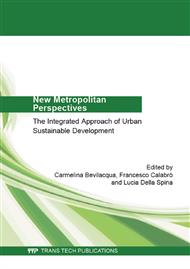p.198
p.204
p.209
p.214
p.220
p.227
p.232
p.241
p.247
Intermodal Nodes for the European Metropolis: Amsterdam Zuidas as EURandstad's Gate
Abstract:
Since more than fifty years, in the Netherlands, the Randstad Holland [1,2] represents a model of reference within the international debate on the sustainable balance between urban areas, infrastructural development and preservation of natural environment. The polycentric urban structure of the country progressively built up a new metropolitan reality of Europe, based on a stable configuration of cities’ spatial relations around the maintenance of the Green Hearth core and on strategic logics of infrastructural developments. However today the double awareness to rebalance growing population of urban areas and to open the region towards North-Central Europe, create fundamental conditions for a renewed expanding vision [3]. The current Dutch metropolitan perspective looks at the densest cities of Amsterdam and Rotterdam as main European and international gates, addressing large scale ambitions to clusters of urban developments at the intersection of main roads, railways and local infrastructures. This paper presents an investigative approach and intends to provoke academic discussion on the conflicting and possible relationships between urban policies and design strategies in the construction of a new metropolitan European perspective. Particular emphasis is put on the coordination between contemporary policies with spatial implications in the city of Amsterdam. Exploring its geographical advantages, the City tries to give form to policies’ abstraction of Randstad 2040 vision in the recent structural spatial Agenda, focused on strategic urban and economic cores. The current vision represents the metropolitan ambition of the Netherlands, where the project of Zuidas - literally South Axis - is a prime example of a new model of intermodal urban hub. Throughout the Dutch example, this paper attempts to present Zuidas testing its capability to enhance an innovative approach – in urban policy and spatial implication- to sustainable development.
Info:
Periodical:
Pages:
220-226
Citation:
Online since:
June 2014
Authors:
Permissions:
Share:
Citation:


